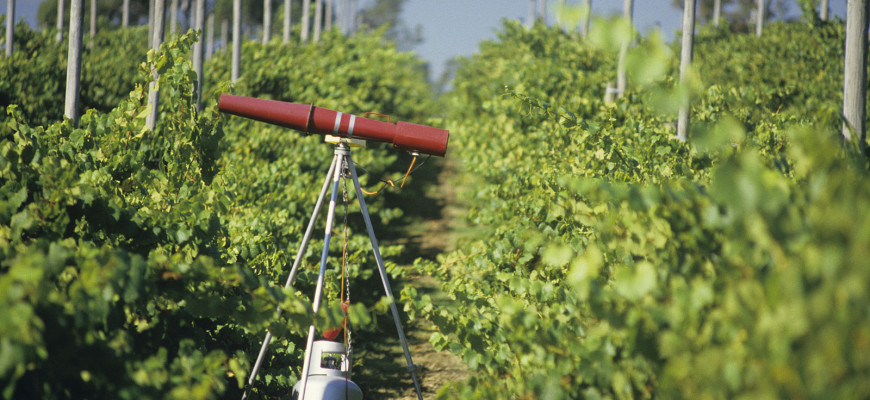
If you are feeding birds on your property, stop now. Birds will soon be returning from warmer climates, will start mating, and will build nests near a food supply. As their young grow, they will be taught about the food sources nearby.
As you go through your vineyard this spring, pruning and tying, remove any bird nests nestled among your grapevines!
Be aware of potential perching areas close to your vines. You may need more deterrents in these areas. These would be woodsy areas where birds can seek shelter and shade, fly out and eat grapes, then fly back for nighttime roosting.
As migratory birds return to your area, be observant as you spend time in your vineyard. What species of birds are hanging around? What hawks are in your area? This information will be important when it comes time to selecting deterrents.
BIRD CONTROL IN AUGUST and SEPTEMBER
Bird migratory behavior is starting. This means feeding changes for your resident birds, as well as new birds coming through your area. Flocks of birds are looking for a ready food source to keep them going as they migrate. Resident birds have produced more young, which are either being fed and introduced to your crop, or have learned and have formed their own feeding groups. It is sometimes hard to identify species of young birds (especially at a distance), as they have not fully acquired their adult plumage.
If by any chance, you still have bird feeders out, even empty ones will attract the attention of birds migrating. Your resident birds will continue to check feeders, as long as they’re up.
Are you using drip irrigation? Dripping water will attract birds. Robins especially are appreciative of this feature, as it also enables them to locate earthworms, should they desire a break from your fruit. If you can safely irrigate at times when birds are less likely to be around, that may help. Drought areas in your state will cause more aggressive bird feeding behavior, as they need moisture as well as food.
Whatever method of bird control you’re using needs stepping up at this time, and continue through harvest.
Bird distress units should have chips changed, speakers relocated, or speakers added. Add a visual deterrent to give the birds a focus – they look for what is causing the distress.
Be sure that your distress unit is working every day. Broken wires, dead batteries, and lightning strikes can cause problems with your unit. If you’re using a battery, consider getting a second battery for backup. Keep one charged, and the other powering your distress call unit.
We keep battery cables, adapters, extra speakers, a variety of recording chips, and the Bird Gard units themselves on hand, in case of emergency.
If you are using visual scare only, relocate those, add something new, change visuals, or add an auditory scare. Even audio tapes with loud sounds can be played. Try the sound track from Gettys- burg, or other tapes with gun sounds or loud noises.
For robins, put some scare items closer to the ground. Once they get down on the ground and under the canopy, they tend to ignore scare items above the crop. Suggestions from growers also include audio tape draped over the crop & fishline strung under the canopy and closer to the ground as a barrier.
If you’re using bird net, be sure that it is secured at the sides and bottom, especially if robins are your problem. They can get up underneath your net and eat your fruit. If you need help on bird identification or suggestions on what to do, we will be happy to assist you!

